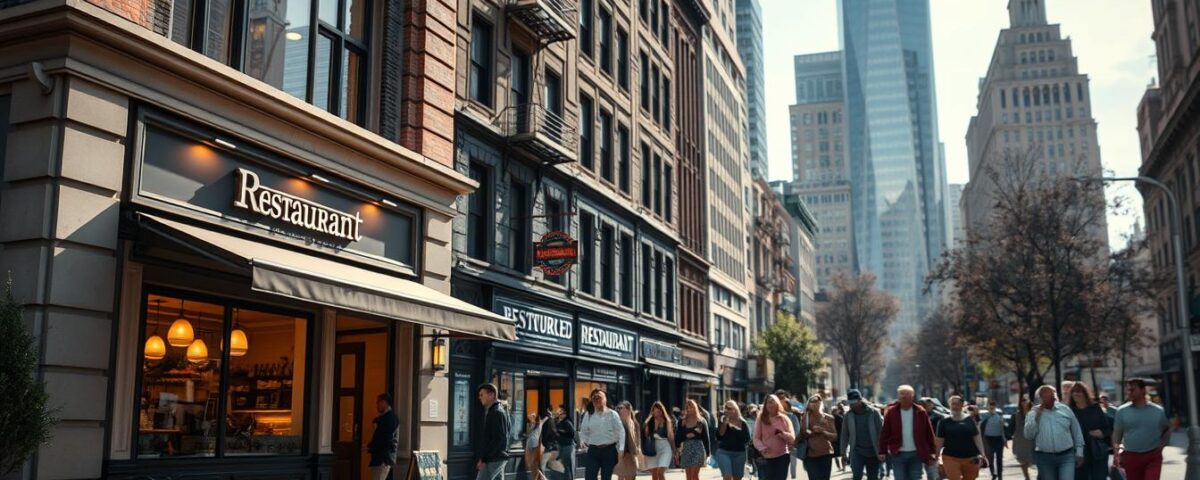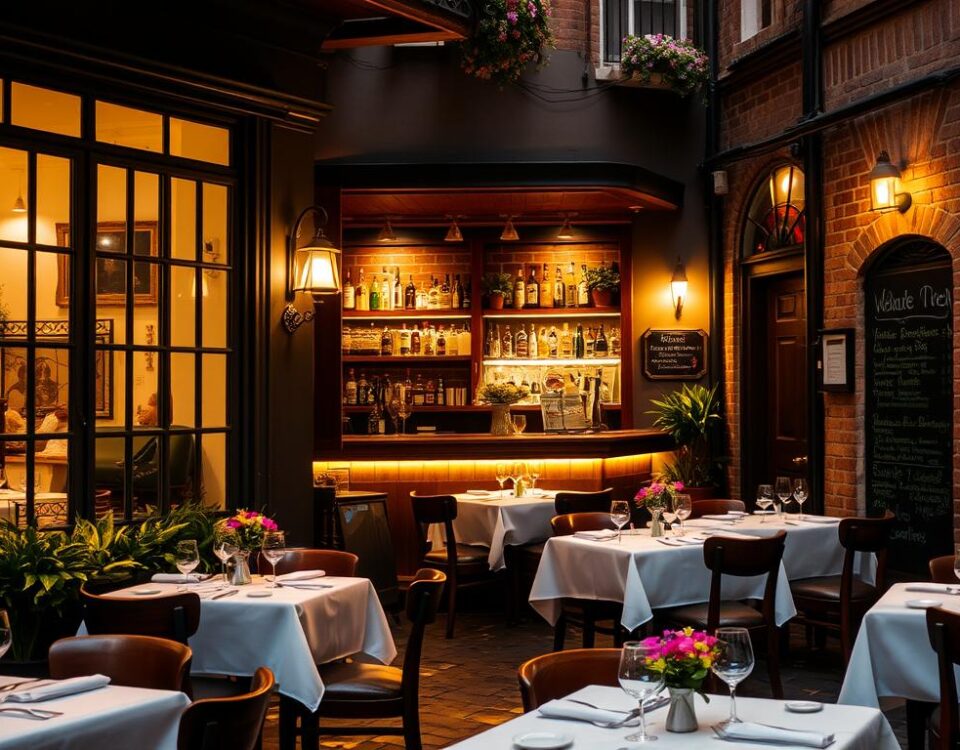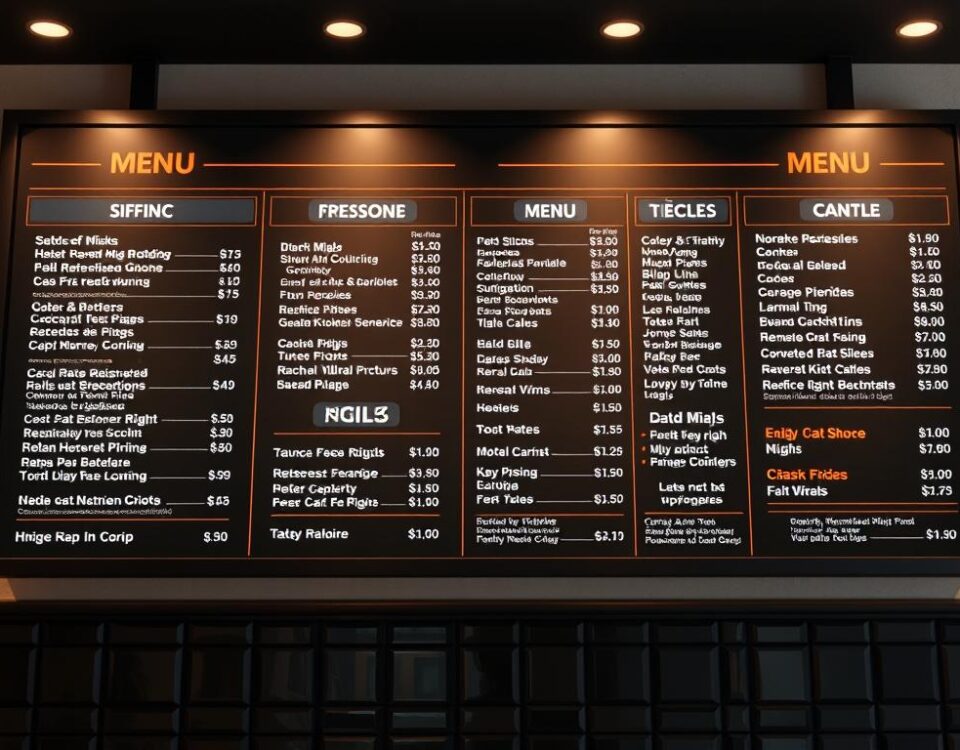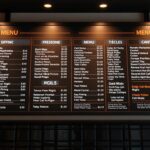
Boost Menu Sales with Anchoring and Contrast Pricing Psychology
November 3, 2025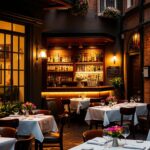
Is Your Restaurant Location Hurting Sales? Here’s How to Tell
November 4, 2025When I opened my first restaurant, I quickly learned that the phrase “location, location, location” isn’t just a catchy real estate mantra – it’s a crucial business strategy. The right restaurant location can make or break your success.
Did you know that nearly 60% of restaurants fail within the first year, with poor location being a significant contributing factor? Choosing the ideal spot is more than just finding available space; it’s about understanding your target customers and creating a business that thrives.
So, what makes a great location for a restaurant? In this guide, I’ll share my comprehensive approach to finding the perfect spot that aligns with your brand identity and business goals, ensuring your restaurant’s success from day one.
Key Takeaways
- Understand the importance of location in the restaurant industry.
- Learn how to evaluate potential restaurant locations based on visibility and accessibility.
- Discover practical tips for conducting a thorough location analysis.
- Find out how to balance cost considerations with revenue potential.
- Align your restaurant’s brand identity with the right location.
Why Your Restaurant’s Location Is Critical to Success
A restaurant’s location is a critical determinant of its success, influencing not just visibility but also customer perceptions and ultimately, the bottom line. The right location can serve as a powerful marketing tool, drawing in customers and setting the stage for a thriving business.
The “Location, Location, Location” Principle in the Restaurant Industry
The adage “location, location, location” is particularly relevant in the restaurant industry, where the physical presence of a business directly impacts customer discovery and first impressions. A good location with high foot traffic can significantly reduce marketing costs while attracting a steady stream of customers. This principle underscores the importance of carefully selecting a site that aligns with your target market and business goals.
How Location Impacts Your Restaurant’s Visibility and Customer Acquisition
The location of your restaurant plays a crucial role in its visibility and ability to acquire new customers. A prominent location, such as a bustling town center or a strip mall adjacent to a busy road, can increase your restaurant’s exposure to potential customers. Conversely, a location that is off the beaten path may require additional marketing efforts to attract customers. Understanding how location affects your restaurant’s visibility is key to developing effective strategies for customer acquisition and retention.
By choosing a location that is easily accessible and visible to your target market, you can enhance your restaurant’s chances of success. This involves considering factors such as traffic patterns, neighboring businesses, and the overall demographic makeup of the area. A well-chosen location can give your restaurant a competitive edge, positioning it for long-term success in the restaurant industry.
Understanding Your Target Market Before Location Hunting
Knowing your target market is the foundation of choosing the right location for your restaurant. It’s essential to understand who your ideal customers are, what they like, and where they spend their time.
Identifying Your Ideal Customer Demographics
To identify your ideal customer demographics, you need to conduct thorough market research. This involves gathering data on age ranges, income levels, lifestyle preferences, and dining habits. For instance, a fast-food restaurant catering to families with kids would thrive in suburban areas, while a pizza slice shop targeting young adults would be better suited near nightlife spots.
Some key factors to consider when identifying your target demographics include:
- Age ranges and income levels
- Lifestyle preferences and dining habits
- Proximity to your proposed restaurant location
Aligning Your Restaurant Concept with Location Demographics
Once you have a clear understanding of your target demographics, you need to align your restaurant concept with the location demographics. This ensures a natural fit between your food offerings and the local population. For example, a build-your-own bowl quick-service restaurant targeting urban professionals would do well in a city’s corporate district.
To align your concept with location demographics, consider the following:
- Analyze neighborhood data to determine if the area can support your restaurant type and price point
- Evaluate foot traffic to ensure it consists of your target customers
- Understand how different dining concepts require different demographic considerations
By understanding your target market and aligning your restaurant concept with location demographics, you can make an informed decision when choosing a location. This strategic approach helps predict customer behavior patterns, impacting your restaurant’s operating hours, menu design, and pricing strategy.
Key Factors in How to Choose Restaurant Location
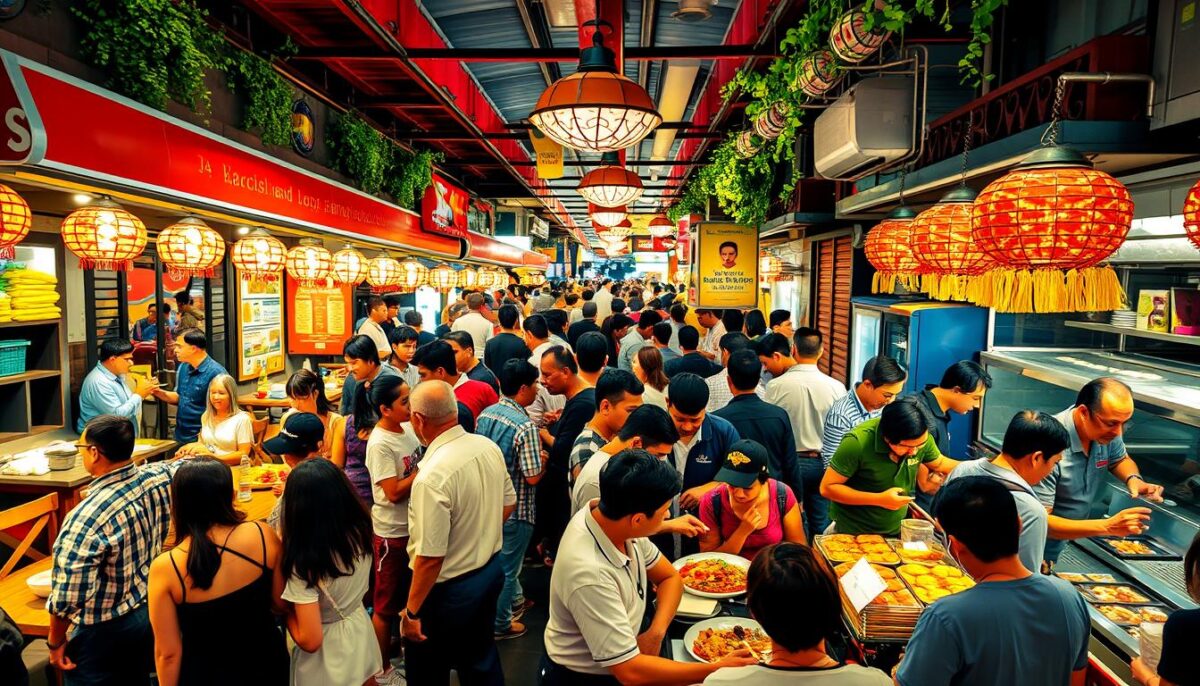
Selecting the ideal location for your restaurant involves considering several key factors that can make or break your business. As a restaurateur, you need to evaluate various elements to ensure your restaurant is visible, accessible, and appealing to your target audience.
Analyzing Foot and Vehicle Traffic Patterns
When evaluating a potential restaurant location, I always analyze both foot and vehicle traffic patterns at different times of day and different days of the week. This analysis helps determine whether the location aligns with your target meal periods, such as breakfast, lunch, or dinner, to maximize customer flow.
To get accurate traffic counts, I recommend measuring actual traffic rather than relying on landlord estimates or outdated data. This involves observing the number of people passing by the location and assessing whether they are potential customers.
Visibility and Line of Sight Considerations
Visibility is critical for attracting spontaneous customers. Your restaurant needs to be easily seen from main thoroughfares or walking paths. I ensure that the location has an unobstructed line of sight, making it visible to potential customers from the street.
An eye-catching sign or display can significantly enhance visibility. Testing customers’ line of sight to your restaurant should be an essential part of your restaurant location analysis.
Accessibility and Parking Requirements
Accessibility considerations should include not just physical access but also psychological barriers that might prevent customers from visiting your restaurant. I evaluate the location’s accessibility, ensuring it is convenient for customers to enter and exit the premises.
Parking requirements vary for different types of restaurants. Inadequate parking can severely limit your customer base, regardless of food quality. I assess the parking availability and ensure it meets the needs of your target audience.
Making sure your restaurant space is accessible to customers with disabilities is both legally required and good for business. I share strategies for evaluating a building’s exterior features to ensure they complement your restaurant concept rather than detract from it.
Evaluating the Competition and Complementary Businesses
To ensure your restaurant thrives, it’s essential to analyze both the competition and the businesses that complement yours. This dual analysis will help you make an informed decision about your restaurant’s location.
When evaluating a potential location, it’s crucial to understand the competitive landscape. Avoid building your restaurant near a direct competitor, as this can lead to a challenging battle for market share. For instance, opening a froyo shop next to an existing one might not be ideal, as you’ll need to work hard to win over customers and keep them from returning to their preferred shop.
Avoiding Direct Competition
To avoid direct competition, I recommend mapping out all direct competitors in the area. This involves analyzing their strengths and weaknesses to determine if your restaurant concept can offer something unique to the neighborhood. By doing so, you can identify gaps in the market that your restaurant can fill.
- Analyze the competition’s menu offerings and pricing strategies.
- Assess the ambiance and service quality of competing restaurants.
- Identify areas where your restaurant can differentiate itself.
Leveraging Complementary Businesses
While direct competition is undesirable, having complementary businesses nearby can be beneficial. For example, a smoothie shop near a gym or a coffee shop next to a university library can drive high sales due to the natural foot traffic. By identifying such complementary businesses, you can leverage their customer flow to your advantage.
Some strategies for leveraging complementary businesses include:
- Identifying businesses that attract your target demographic.
- Analyzing how proximity to certain businesses can create symbiotic relationships.
- Evaluating customer reviews of nearby restaurants to identify service or food gaps.
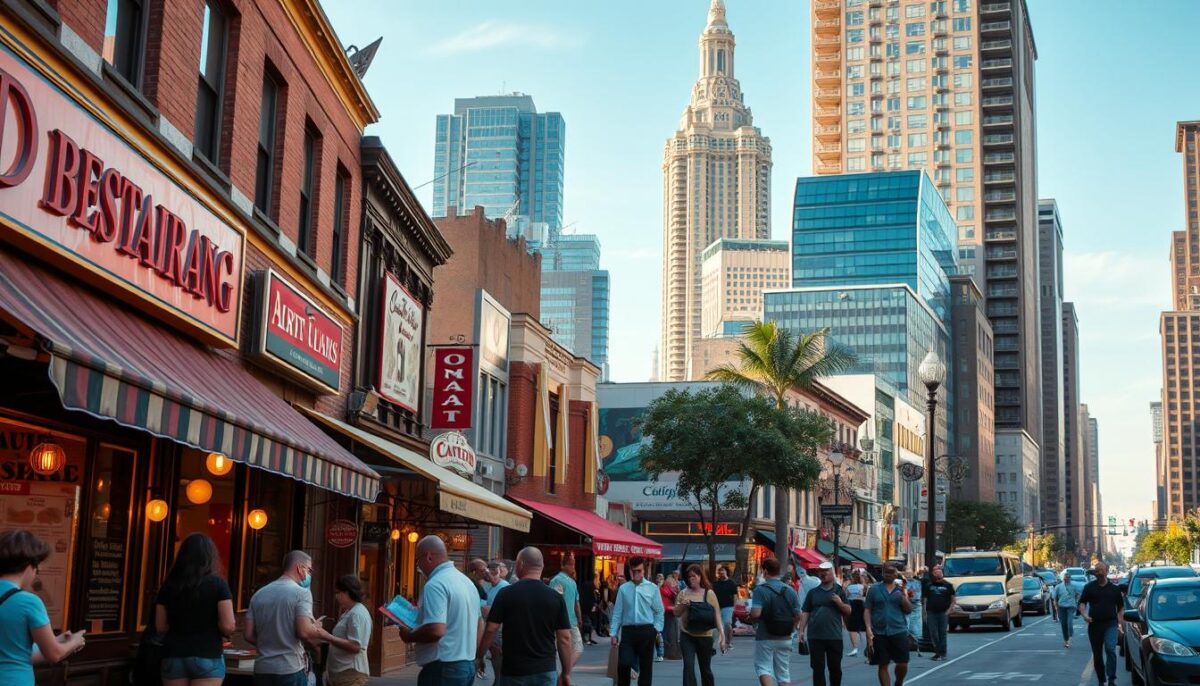
By carefully evaluating both the competition and complementary businesses, you can make an informed decision about your restaurant’s location and set yourself up for success.
Legal and Regulatory Considerations for Restaurant Sites
Legal considerations play a significant role in choosing the right location for your restaurant. Ensuring compliance with local regulations is crucial for avoiding legal obstacles and ensuring the longevity of your business.
Zoning Laws and Permit Requirements
First and foremost, it’s critical to verify that your chosen site is zoned for a restaurant. Zoning laws vary significantly by area and can immediately disqualify a potential location if not complied with. Additionally, various permits and licenses are required to operate a restaurant, including health department permits and business licenses.
To navigate these regulations, it’s advisable to work closely with local authorities. Understanding the specific requirements for your neighborhood and ensuring your restaurant meets all necessary standards is vital.
Alcohol Licensing Considerations
If your restaurant concept includes serving alcohol, obtaining the appropriate licenses is essential. Alcohol licensing considerations can significantly impact your business model and revenue potential. The process for obtaining these licenses varies by location and can be complex, so it’s crucial to start the application process early.
Moreover, considerations such as parking requirements, waste management, and noise ordinances must also be taken into account. Ensuring your restaurant location complies with all these regulations will help in avoiding costly modifications or legal issues down the line.
By carefully evaluating these legal and regulatory considerations, you can make an informed decision when selecting a location for your restaurant, ultimately contributing to its success.
Balancing Cost and Value in Restaurant Real Estate
When it comes to choosing a location for your restaurant, understanding the balance between cost and value is essential. The location of your restaurant is a critical factor in its success, and making the right choice requires careful consideration of various factors.
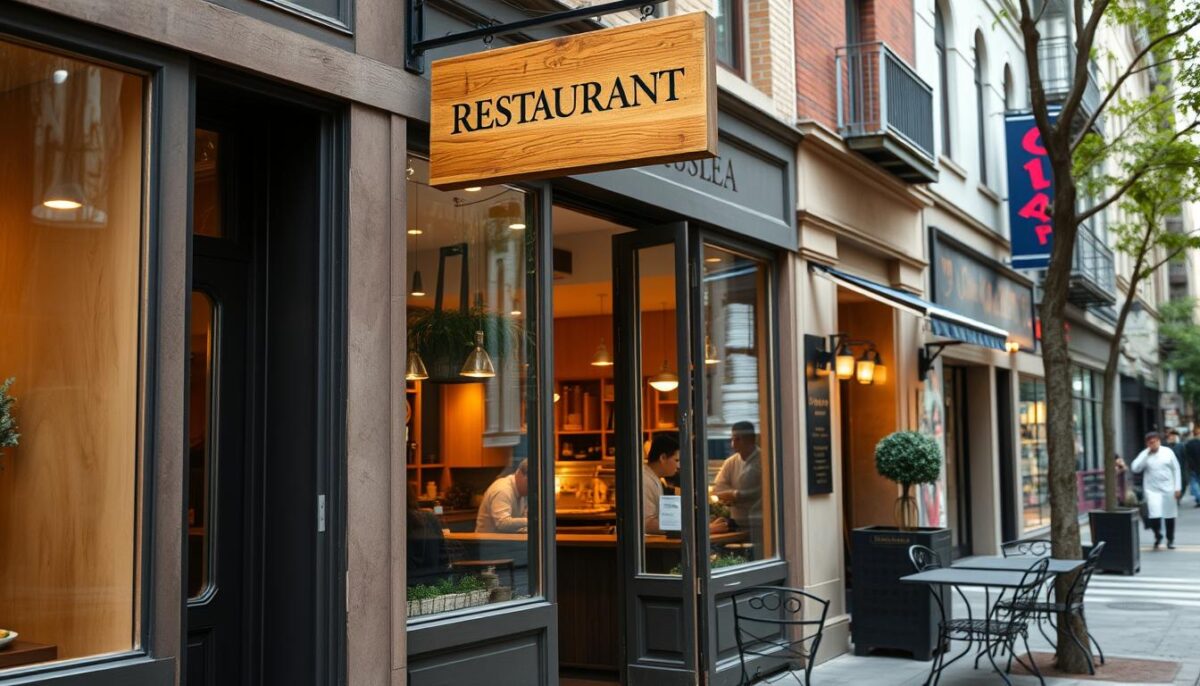
Understanding Rent-to-Revenue Ratios
A crucial aspect of balancing cost and value is understanding the rent-to-revenue ratio. This ratio helps you determine whether the rent you’re paying is sustainable based on your projected sales volume. As a general rule, the cost of the site should never exceed 10% of your revenues. To calculate this ratio, you’ll need to analyze your projected annual sales and compare them to the annual rent. For instance, if your annual rent is $100,000 and your projected annual sales are $1,000,000, your rent-to-revenue ratio is 10%. This is a critical factor in determining the long-term sustainability of your business.
Different restaurant concepts and industry segments have different optimal rent-to-revenue ratios. For example, a high-end fine dining restaurant may be able to sustain a higher rent-to-revenue ratio due to its higher price point, while a quick-service restaurant may need to maintain a lower ratio to remain competitive. Understanding your restaurant’s specific needs and financial projections is key to determining the right balance.
Creative Solutions for High-Cost Areas
If you can’t afford a space in the location you desire, it’s time to get creative. One strategy is to consider a nearby, up-and-coming area where real estate is still affordable but has strong growth potential. By dedicating the money you save on rent to marketing, you can attract customers to your new location. Over time, your second-choice neighborhood could even become prime real estate.
Another approach is to share space with complementary businesses or negotiate favorable lease terms. This could involve partnering with a business that complements your restaurant concept, such as a bakery or a coffee shop, to share the costs of a larger space. You can also negotiate with your landlord to secure a more favorable lease, such as a longer lease term or a rent-free period during the initial months of operation.
By carefully evaluating the cost and value of different locations and considering creative solutions, you can find the perfect spot for your restaurant that balances your budget with your business needs.
Location Strategies for Different Restaurant Types
Different restaurant concepts demand distinct location strategies to succeed. The type of dining experience you offer significantly influences the kind of location that will be most beneficial for your business.
Quick-Service Restaurant Location Requirements
Quick-Service Restaurants (QSRs) thrive on convenience and impulse decisions. For a QSR, a high-visibility location with easy access is crucial. These restaurants benefit from being situated in high-traffic areas such as strip malls, near frequently visited shops, or in parts of the city where people work and need quick lunch options.
Key Considerations for QSR Locations:
- High-traffic areas
- Easy access and minimal barriers to entry
- Proximity to offices or residential areas
- Drive-thru capability can significantly boost business
QSRs typically require less parking space compared to full-service restaurants because of faster customer turnover.
Full-Service and Fine Dining Location Considerations
Full-Service Restaurants (FSRs) and fine dining establishments, on the other hand, can often succeed in more remote or less accessible locations because they are typically destination locations. The ambiance, quality of food, and service become the main draws, rather than just convenience.
Key Considerations for FSR and Fine Dining Locations:
- Ambiance and uniqueness of the location
- Scenic views or unique settings (e.g., vineyard, waterfront)
- Adequate parking space due to longer dining times
- Less dependence on high foot traffic; more on reputation and destination appeal
| Restaurant Type | Location Preferences | Parking Requirements |
|---|---|---|
| Quick-Service | High-traffic, convenient | Less parking needed |
| Full-Service/Fine Dining | Destination, ambiance-driven | More parking needed |

Understanding these differences is crucial for choosing a location that supports your restaurant’s concept and enhances its perceived value to your target customers.
Conclusion: Making Your Final Location Decision
Choosing the ideal location for your restaurant is a multifaceted decision that requires careful consideration of various factors. A thorough location analysis helps you make an informed decision, balancing elements such as customer demographics, foot traffic, and competition.
To make your final location decision, consider creating a weighted decision matrix that accounts for all relevant factors. Testing your chosen location through pop-up events or food truck appearances can also provide valuable insights. By doing so, you’ll be able to develop a successful business strategy that attracts and retains customers, ultimately driving the success of your restaurant.
FAQ
What are the key factors to consider when evaluating a potential restaurant location?
When evaluating a potential restaurant location, I consider factors such as foot and vehicle traffic patterns, visibility, accessibility, parking requirements, and proximity to complementary businesses. I also analyze the demographics of the surrounding area to ensure they align with my target market.
How do I determine if a location is too competitive for my restaurant concept?
To determine if a location is too competitive, I research the local market and assess the number of similar restaurants in the area. I also evaluate the unique selling points of my restaurant concept and determine if they can differentiate me from the competition.
What role do zoning laws and permit requirements play in selecting a restaurant location?
Zoning laws and permit requirements play a crucial role in selecting a restaurant location. I ensure that the location is zoned for commercial use and that I can obtain the necessary permits to operate a restaurant. I also research any specific regulations or restrictions that may impact my business.
How do I balance the cost of rent with the potential revenue of a restaurant location?
To balance the cost of rent with potential revenue, I calculate the rent-to-revenue ratio to ensure it’s within a sustainable range. I also consider creative solutions, such as negotiating a flexible lease or exploring alternative locations that offer better value.
What are the benefits of locating my restaurant near complementary businesses?
Locating my restaurant near complementary businesses can drive customer flow and increase visibility. By being near businesses that share my target market, I can capitalize on the existing foot traffic and create a synergistic effect that benefits my restaurant.
How do I assess the accessibility and parking requirements for a potential restaurant location?
When assessing accessibility and parking requirements, I evaluate the location’s proximity to public transportation, pedestrian traffic, and parking availability. I also consider the needs of my target market, such as ample parking for families or convenient access for commuters.
